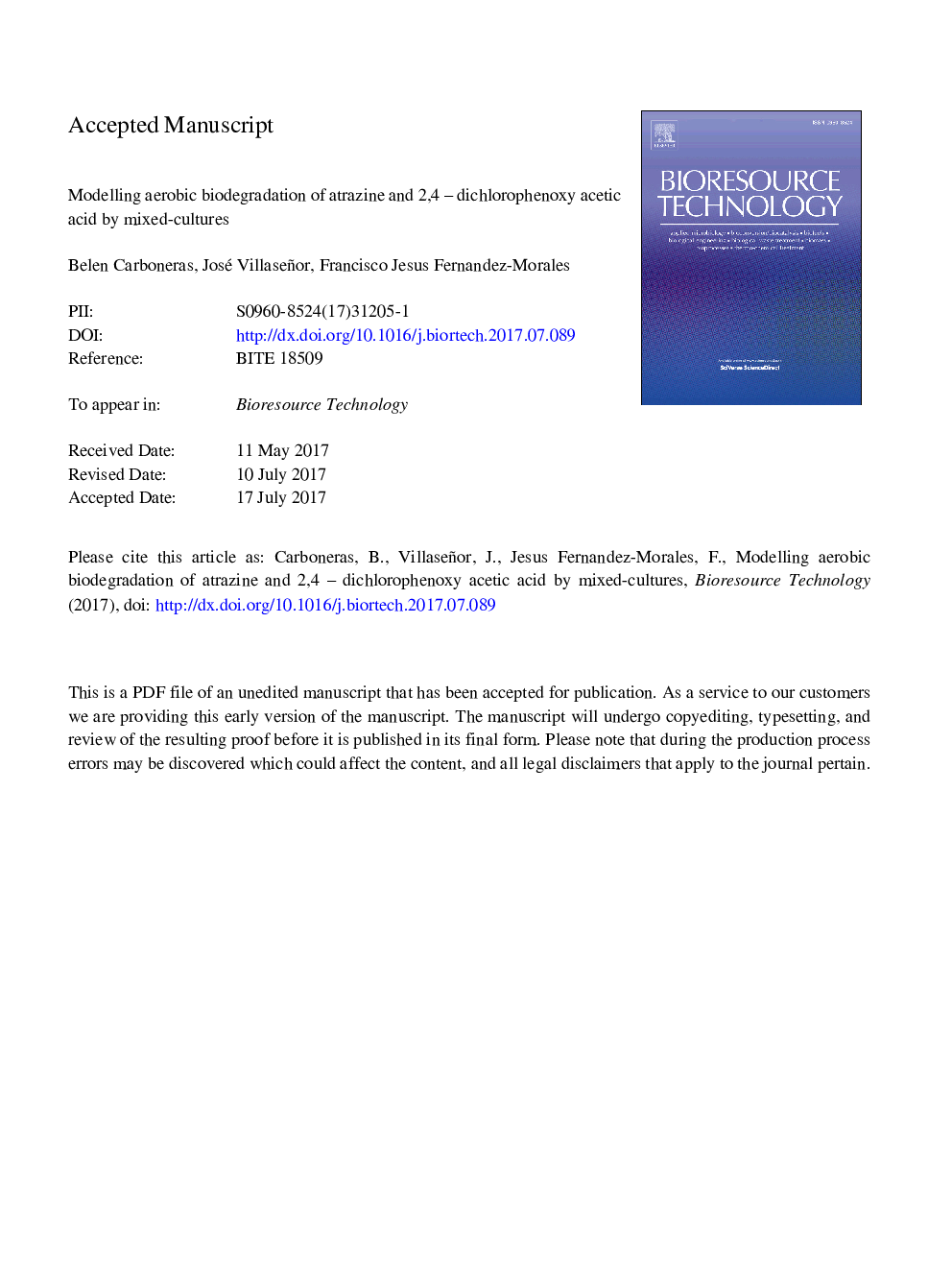| Article ID | Journal | Published Year | Pages | File Type |
|---|---|---|---|---|
| 4996897 | Bioresource Technology | 2017 | 29 Pages |
Abstract
The aim of this work was to study and to model the biodegradation of atrazine and 2,4-dichlorophenoxy acetic acid by aerobic mixed cultures. Slow removal rates were observed when biodegrading atrazine, in spite of the initial concentrations. However, high removal rates were obtained when biodegrading 2,4-D, removing up to 100 mg/L in about 2 months. Regarding the 2,4-D it must be highlighted that a lag phase appears, being its length proportional to the initial 2,4-D concentration. The biodegradation trends were fitted to a Monod based model and the value of the main parameters determined. In the case of atrazine they were µmax: 0.011 1/d and Y: 0.53 g/g and in the case of 2,4-D µmax: 0.071 1/d and Y: 0.44 g/g, indicating the higher persistence of atrazine. Once finished the experiments the microbial population was characterized being the major genus Pseudomonas when treating atrazine and Rhodococcus when treating 2,4-D.
Related Topics
Physical Sciences and Engineering
Chemical Engineering
Process Chemistry and Technology
Authors
Belen Carboneras, José Villaseñor, Francisco Jesus Fernandez-Morales,
